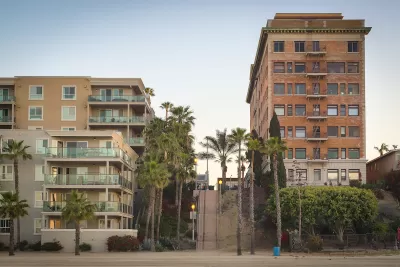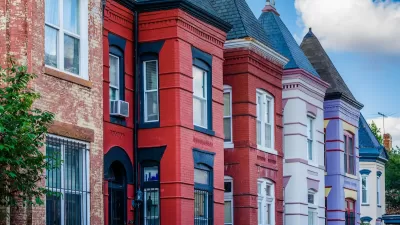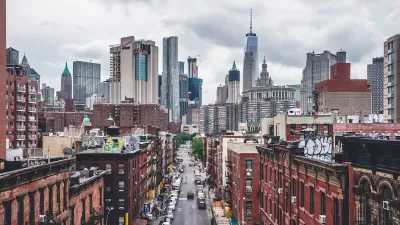Changing zoning rules for a small number of parcels can increase land values and housing costs without boosting the housing supply.

In a piece for Governing, Emily Hamilton explains why concerns that upzoning, or liberalizing land use regulations to accommodate more housing construction could actually raise the cost of land and housing are largely overblown.
These fears, Hamilton explains, come from the idea that upzoning lower-density parcels, particularly if limited to certain areas, will raise land values. However, “Abundant and diverse new housing construction pushes rents down. And because land’s value is ultimately determined by the stream of income it can produce, as more housing supply reduces rents across a region, it puts downward pressure on land values, too.”
Hamilton analyzed land values in Houston, where zoning reforms reduced minimum lot sizes over a span of decades. “Together, Houston’s 1998 and 2013 upzonings facilitated the construction of about 80,000 houses on lots less than 5,000 square feet. Small-lot development has allowed for less expensive housing than could otherwise be built and created opportunities for more people to live in desirable neighborhoods close to job centers.” Meanwhile, a Chicago study showed that limited upzoning near transit stations raised property values of some lots without yielding new housing.
Hamilton’s analysis shows that upzoning has the biggest positive impact when applies broadly over larger geographic areas. “The Houston case shows that when land-use liberalization leads to widespread and diverse housing construction, more people can live where they need to without an unnecessary spike in the price of existing houses.”
FULL STORY: How U.S. Cities Can ‘Upzone’ Without Compromising Affordability

Planetizen Federal Action Tracker
A weekly monitor of how Trump’s orders and actions are impacting planners and planning in America.

Restaurant Patios Were a Pandemic Win — Why Were They so Hard to Keep?
Social distancing requirements and changes in travel patterns prompted cities to pilot new uses for street and sidewalk space. Then it got complicated.

Map: Where Senate Republicans Want to Sell Your Public Lands
For public land advocates, the Senate Republicans’ proposal to sell millions of acres of public land in the West is “the biggest fight of their careers.”

Maui's Vacation Rental Debate Turns Ugly
Verbal attacks, misinformation campaigns and fistfights plague a high-stakes debate to convert thousands of vacation rentals into long-term housing.

San Francisco Suspends Traffic Calming Amidst Record Deaths
Citing “a challenging fiscal landscape,” the city will cease the program on the heels of 42 traffic deaths, including 24 pedestrians.

California Homeless Arrests, Citations Spike After Ruling
An investigation reveals that anti-homeless actions increased up to 500% after Grants Pass v. Johnson — even in cities claiming no policy change.
Urban Design for Planners 1: Software Tools
This six-course series explores essential urban design concepts using open source software and equips planners with the tools they need to participate fully in the urban design process.
Planning for Universal Design
Learn the tools for implementing Universal Design in planning regulations.
Heyer Gruel & Associates PA
JM Goldson LLC
Custer County Colorado
City of Camden Redevelopment Agency
City of Astoria
Transportation Research & Education Center (TREC) at Portland State University
Camden Redevelopment Agency
City of Claremont
Municipality of Princeton (NJ)





























